Advanced Sustainable Organic Materials (ASOM) Group
****TWO ONGOING EUROPEAN FUNDED PROJECTS****
1) Gold Nanorods synthesis and scale-up for photoacoustic theranostic nanomedicine approach against bladder cancer. (End-2026)
https://www.phire-project.eu
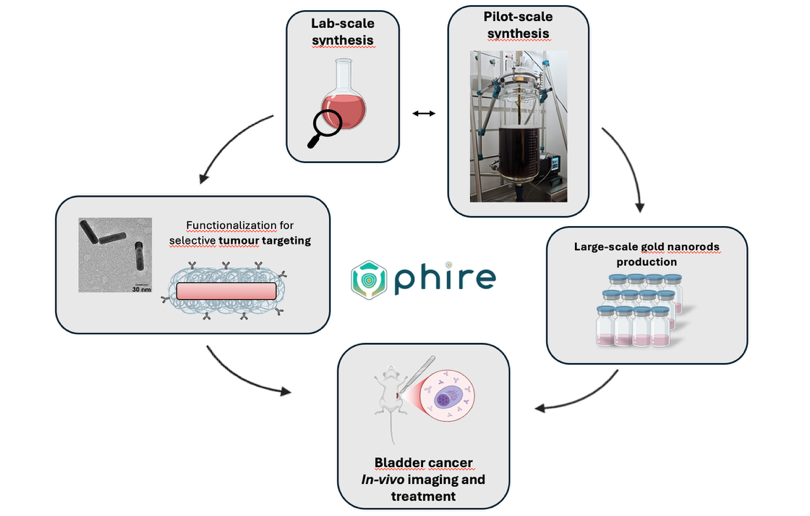
2) Locoregional administration of therapeutic hydrogels to overcome the blood-brain barrier and prevent glioblastoma recurrences. (End-2026)
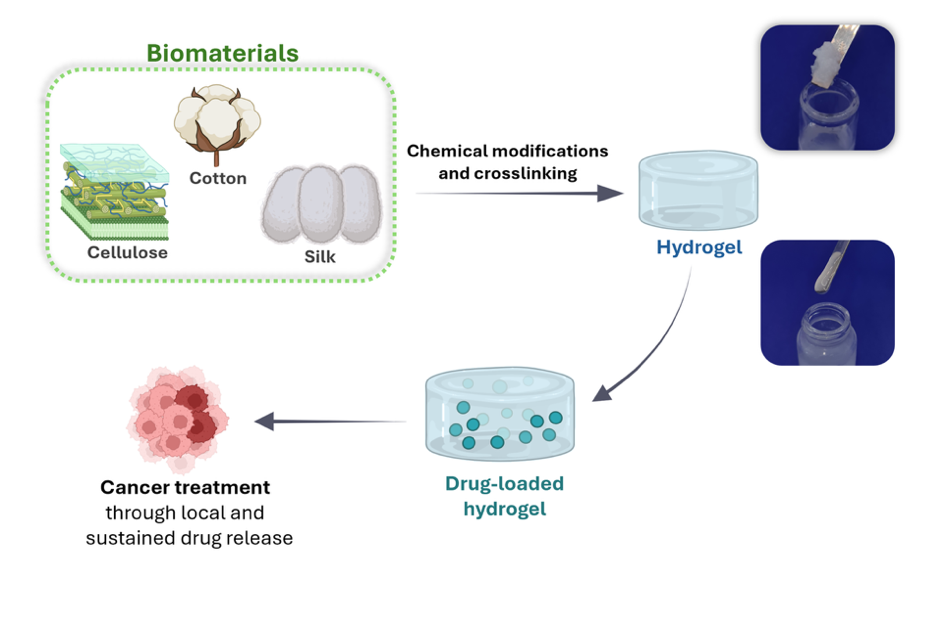
The research group activity is focused on the optimization of innovative processing techniques with the aim of developing new organic sustainable materials for applications in the field of 3D-printing organic electronics, nanomedicine and for industrial applications.
MAIN IN PROGRESS APPLICATIONS:
- Renewable source materials and recycled plastics for Additive Manufacturing (3D printing).
- Theranostic (Therapy + Diagnostic) in the Nanomedicine field (bladder cancer, brain cancer, breast cancer and Melanoma)
- Sensors for Organic Electronics
- Modification of Textiles properties for environment remediation.
- Catalysts encapsulation in biopolymeric hydrogels
Additive Manufacturing (3D-Printing) synthesis of new materials starting from natural pool sources, such as terpenes, carbohydrates and proteins. The starting bio-based materials are synthetically modified (Green Chemistry principles) before being applied to the manufacturing. Main techniques used in ASOM group for the vat-photopolymerization are Liquid Crystal Display (LCD), Digital Light Processing (DLP) and Stereolithography (SLA). In addition, the group develop new compounds to be applied to Fused Granulate Fabrication (FGF), which is a 3D printing process that uses plastic granules (pellets) instead of filament.
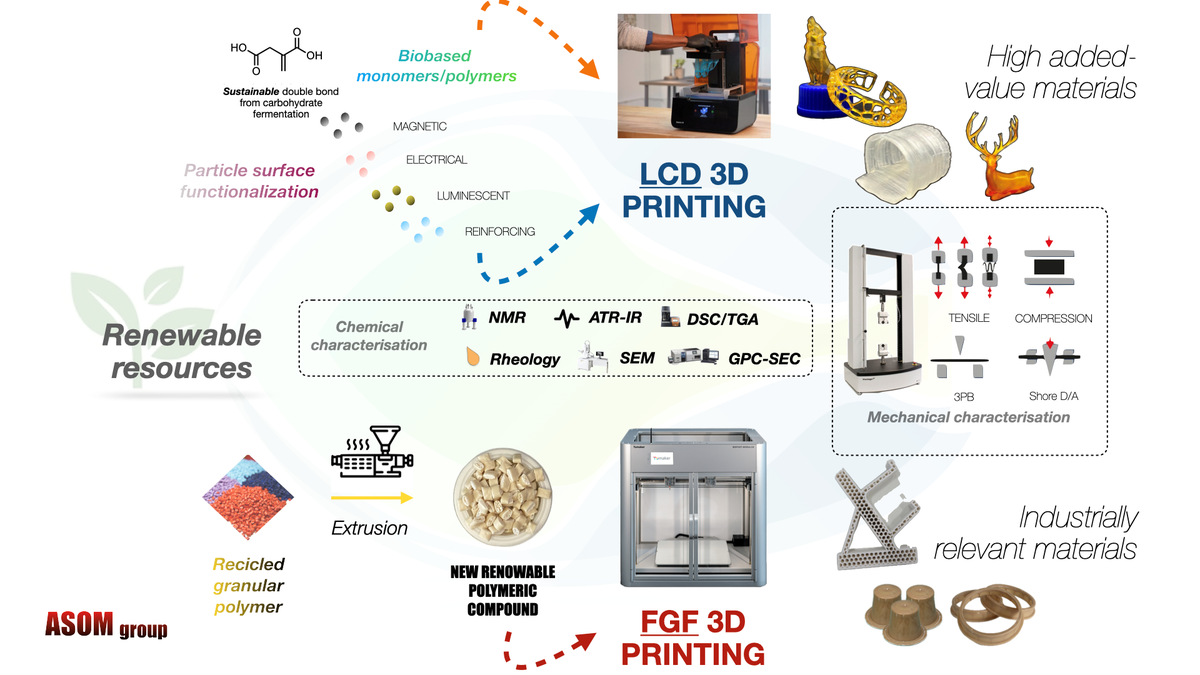
Nanomedicine: The group has a long-standing expertise in synthesis and organic functionalization of different metal and carbon nanostructures (gold, silver, metal oxides, C-nanodots), shapes (triangle, core-shell, cylinder) and luminescent molecules. Overall, the synthesis and functionalization of nanosystems for long and controlled drug release; these nanostructures can also act as light-emitters at a specific wavelength if properly excited, in order to achieve real-time imaging.
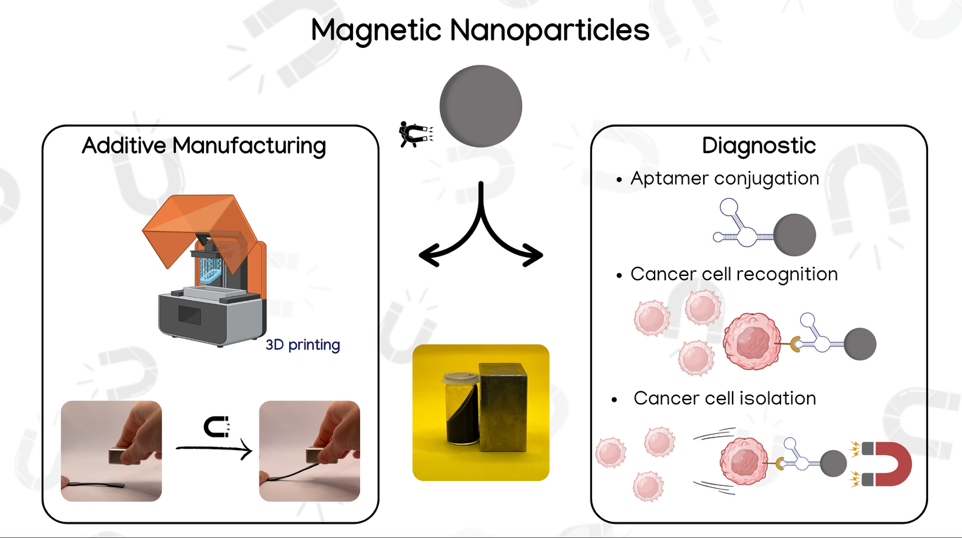
The biomaterials research is also extended in the nanomedicine field for the investigation of novel drug-delivery system (mainly in the form of hydrogel) also able to specifically recognize molecular targets.
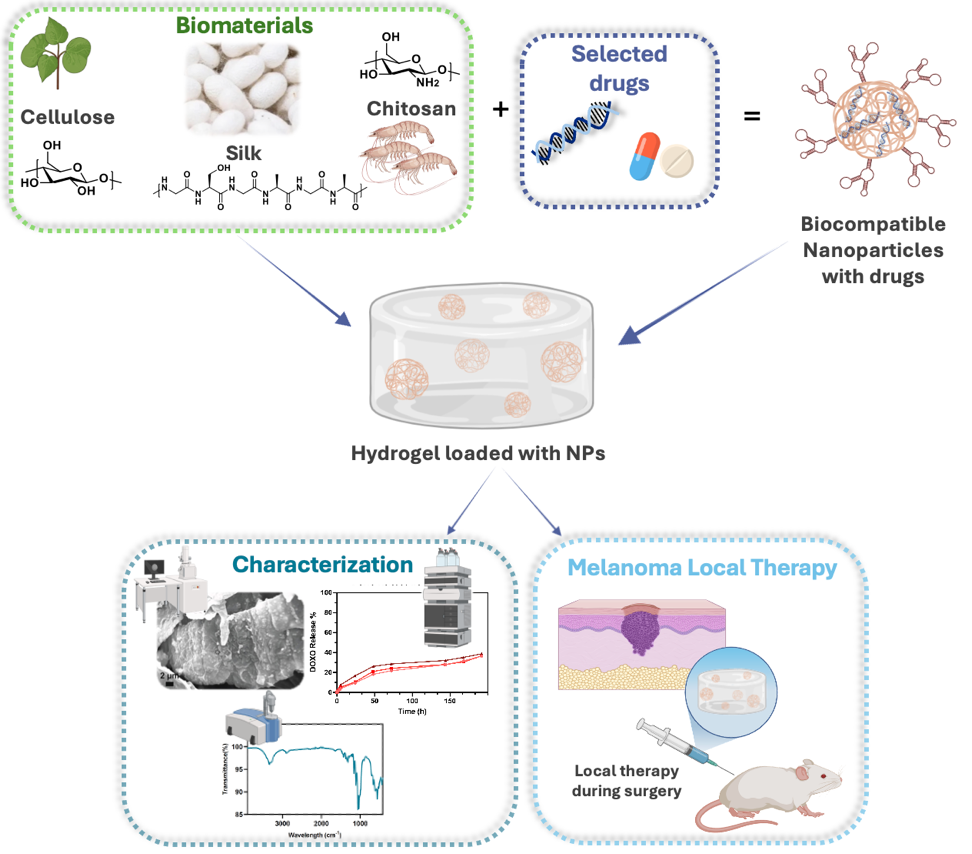
Metal nanoparticles, after proper organic functionalization and attachment to textile fabrics, are also exploited for their catalytic activity against environmental pollutants such as VOCs and PM2.5, leading to the creation of decontaminating garments for easy air purification.
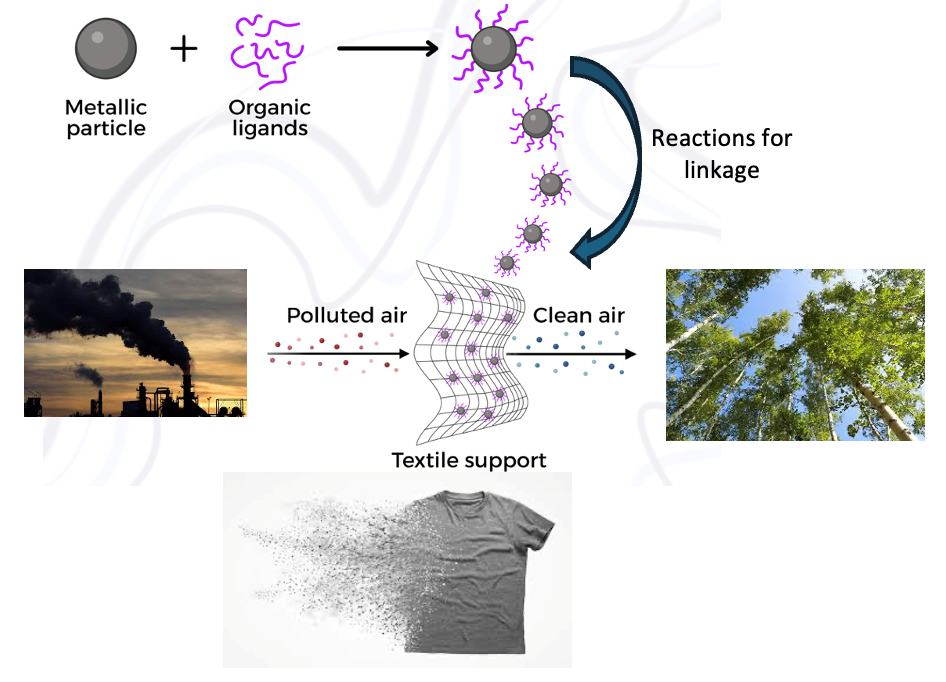
Photoactive materials: Renewable biomaterials can be exploited to synthetize and/or functionalize luminescent derivatives, like red emissive carbon dots or iridium complexes, to be employed in bioimaging and in drug delivery.

On the other hand, biopolymers like alginate can form hydrogels able to embed metal catalysts useful in heterogeneous CO2 photoreduction

Organic Dyes for industrial applications: This research topic involves the use of natural sources and agro-food waste to develop new organic dyes for textile applications (cotton, wool, silk).
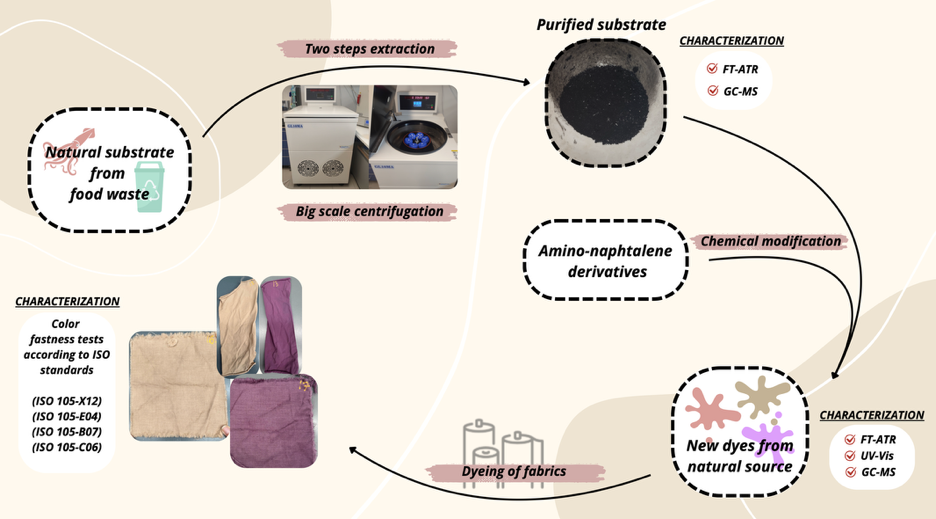
Scientific Coordinator
Prof. Mauro Comes Franchini:
https://www.unibo.it/sitoweb/mauro.comesfranchini
Research group members
Prof. Letizia Sambri: https://www.unibo.it/sitoweb/letizia.sambri
Prof. Erica Locatelli https://www.unibo.it/sitoweb/erica.locatelli2
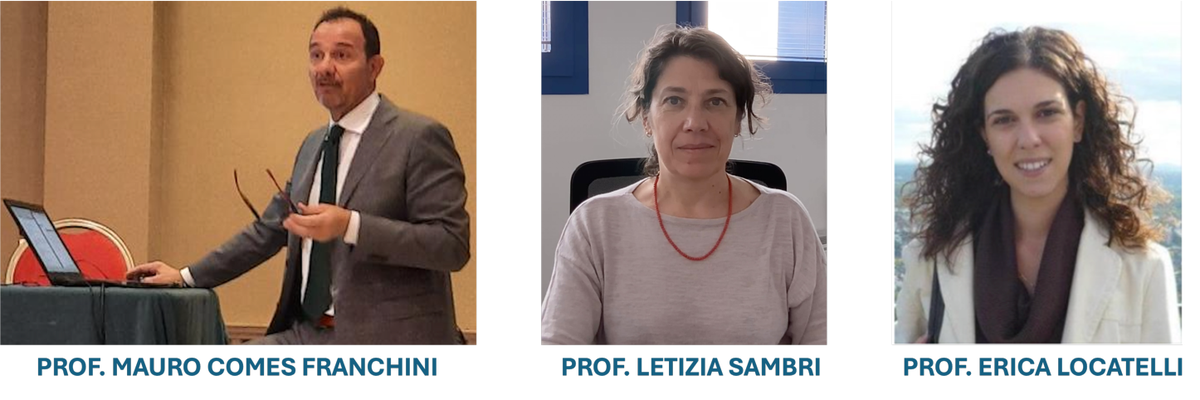
Membri del gruppo di ricerca
Emanuela Bua
Assegnista di ricerca
Filippo Capancioni
Dottorando
Rosario Carmenini
Dottorando
Mauro Comes Franchini
Professore ordinario
Giuseppe Ferrara
Dottorando
Gaia Ghiselli
Dottoranda
Erica Locatelli
Professoressa associata
Aqsa Majeed
Dottoranda
Letizia Sambri
Professoressa associata
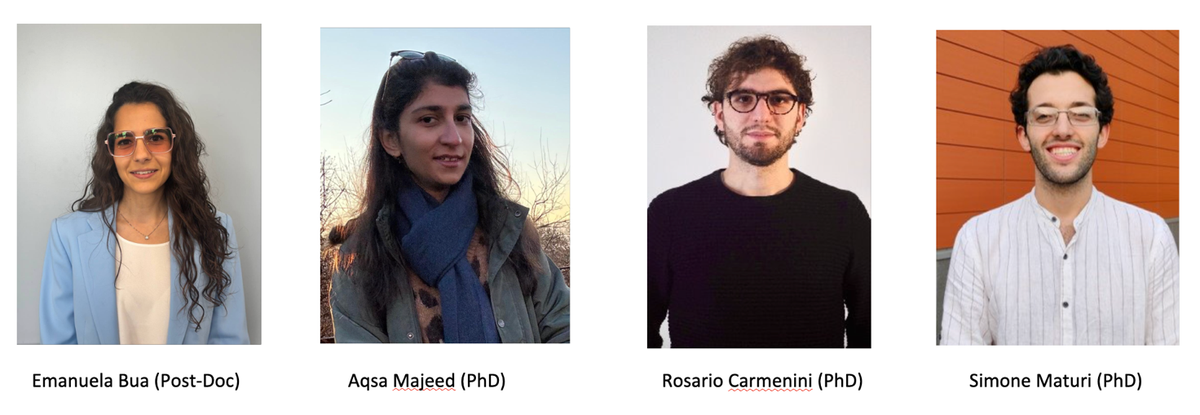

ASOM Laboratory
https://chimica-industriale.unibo.it/it/ricerca/laboratori-di-ricerca/asom-laboratory
ERC codes
PE4_4 Surface science and nanostructures
PE5_6 - New materials: oxides, alloys, composite, organic-inorganic hybrid, nanoparticles
PE5_10 – Nanomaterials: nanoparticles, nanotubes
PE5_12 – Intelligent materials – self-assembled materials
PE5_22 – Supramolecular chemistry